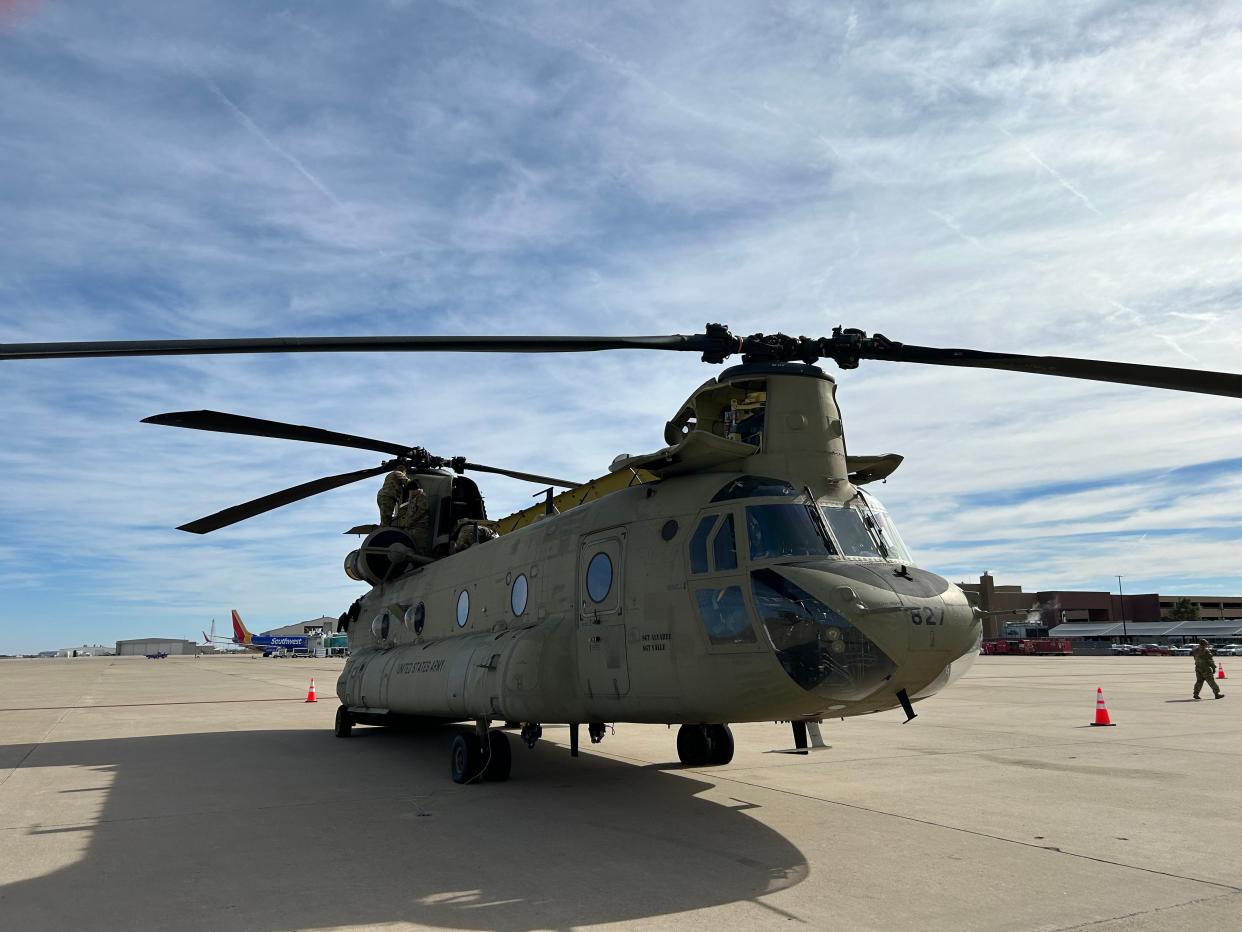Army joins battle against wildfires in West Texas Panhandle
Sunday morning, the U.S. Army sent units 2-149 GSAB and 449 ASB from Grand Prairie to join the battle against the worst wildfire in Texas History.
With relentless high winds blasting a wide area including Canadian, Borger, Stinnett and Fritch, all resources are working together to stop the raging fires engulfing this area.
Commander Lee Stewart directed the attack Sunday evening before the sun went down, from the Signature Aviation airport, next to Rick Husband Air Terminal outside Amarillo. One of three Chinooks on base took off for an area outside Borger and averted the fire heading towards a nearby city. On board was Chief Warrant Officer Doug Phillips and Major Chad Dieter.
One of the Chinooks being used, a Fox model, has one of the longest periods of service in the Army inventory, according to Cameron Ramirez, a Technical Inspector originally from Amarillo, who inspects all areas of the plane before takeoff. He said it was second to the Flying Fortress and can carry a lot of cargo, including Bandy buckets which are filled and then dropped over the site.
Ramirez started as a Mechanic, then became a Crew Chief then advanced to Flight Engineer, then was promoted to Technical Inspector who inspects any maintenance done on the helicopter make sure it’s up to Army and Boeing standards. Ramirez is the son of Mary and Rufus Ramirez of Amarillo. He attended and graduating from Amarillo High School before joining the Army.
Troy Lord, who has logged more hours on the Chinook than any other pilot, said the Bandy Buckets can hold up to 2,000 gallons of water and are extremely heavy. The Bandy’s are laid on the ground then hooked up to the center cargo hook and then we pick up, it hangs 100 feet under the aircraft. He said that the airframe structure is the same of the ones that were used in Vietnam, just updated inside with state-of-art equipment. Nothing can replace the aircraft according to the pilots that fly them.

The huge bucket hangs under the plane and is dropped into water to fill and then transported to the fire site where it is opened and dumped on fire. The choppers can travel at around 160 miles per hour and travel where the terrain is unforgiving for ground attack. They are compact but can also carry an ATV or Hummvee inside, though it is tight.
Aircraft utilized for firefighting and other natural disasters across the country. They stay on alert for any type of disaster including flooding, earthquakes, fires and other problem areas. They are such an asset to the state, they do it full time for the public, even though they are Army Reserves.
Ramirez said they got back from the Middle East a year ago and awaited orders from the Governor of Texas to be activated. They also go to HATS High Altitude Training in Colorado.
Also joining the effort is Texas Task Force One using a Black Hawk as a rescue ship for stranded victims or firemen needing medical attention. According to Matt Geller, with the task force, they can quickly extract a wounded firefighter, civilian or animal and take them quickly to a medical facility, treating them on the way. They are similar to medics in combat and carry med kits and rescue baskets as well as other harnesses for different types of rescues.
There are also larger planes being used which can swoop down on a lake, pick up water, and travel to the site and dump water containing a fire retardant, such as Bromide, to slow down the fire. According
to Commander Lee Stewart, the retardant doesn’t stop the fire totally but makes it more management for ground crews. The retardant is red so they can see where it is and reactive it with water.
They still carry maps with them as backup, but normally rely on computer assisted radar and a special mapping program designated for their use. The crew is normally stationed for 14 days, but depending on weather and fire, they can be in Amarillo longer, with new crews coming in
This article originally appeared on Lubbock Avalanche-Journal: Army joins battle against wildfires in West Texas Panhandle
